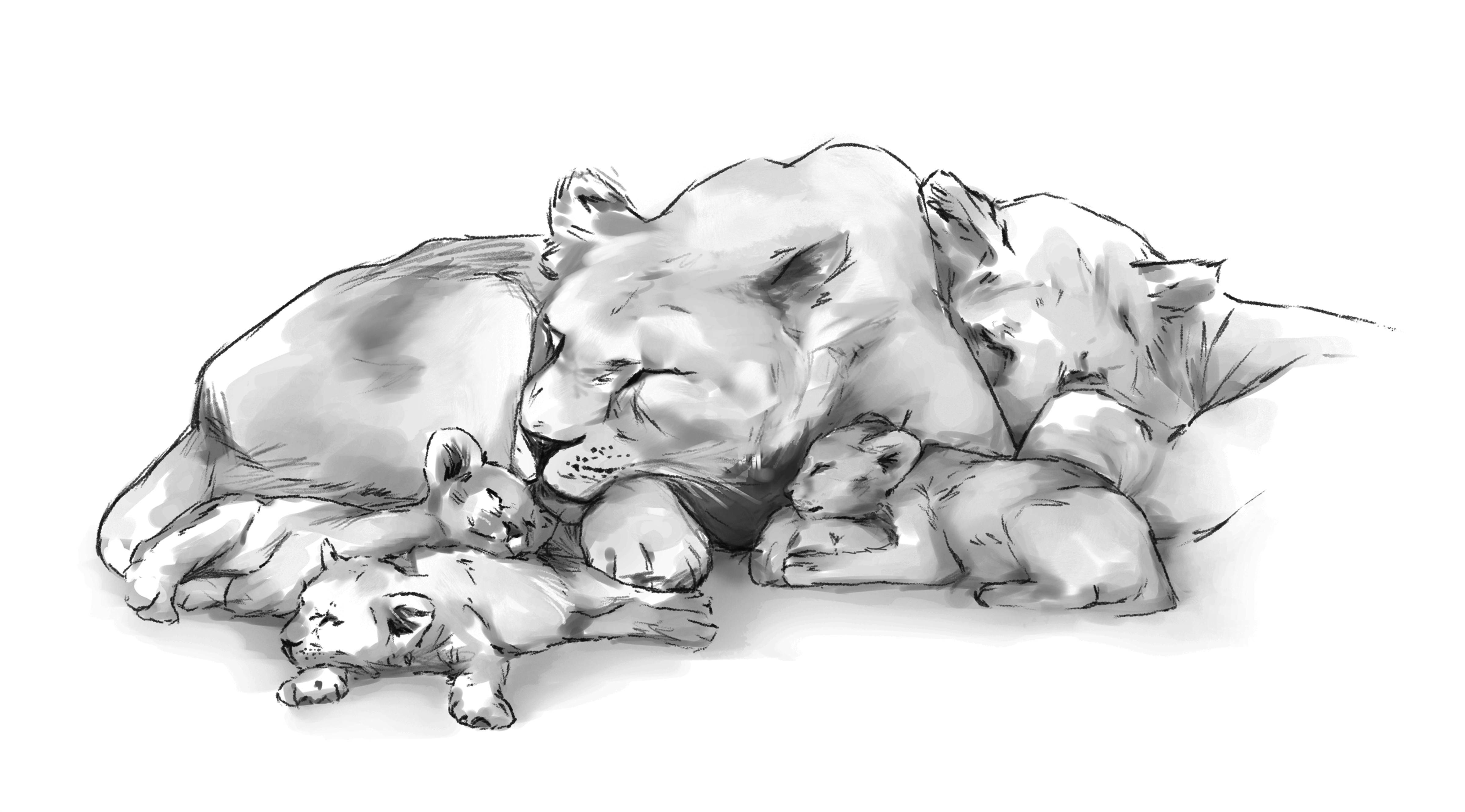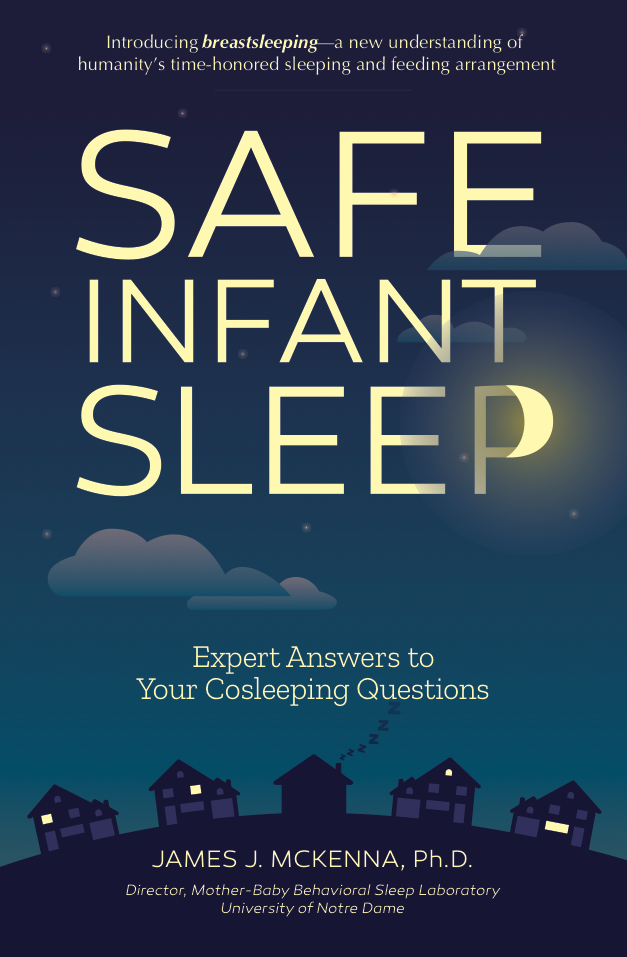Many people don’t fully understand the term “cosleeping,” but they use it nonetheless because they have a sense of what it means. Picture a mother lion and her cubs sleeping in a big heap, paws on top of backs, heads on bellies, body parts rising and falling with each rhythmic breath, the whole group intertwined in one peaceful lump of warmth and touching. That is cosleeping, or at least one version of it.

Cosleeping refers to the many different ways babies or children sleep in close emotional and physical contact with their families, usually within arm’s reach. Whether it is for protection, warmth, ease of nursing, or comfort, humans and other mammals routinely sleep side-by-side, generation after generation. In one way or another, cosleeping remains universal for our species, predating history itself.
This book is both about cosleeping, as practiced in Western cultures and around the globe, and a specific form of cosleeping that I have come to refer to as breastsleeping.
General cosleeping cannot necessarily be characterized the same way across all situations. For example, as former Florida State University football coach Bobby Bowden once said in the South Bend Tribune, “I slept in the same bed with my granddaddy… then in the same bed with my four cousins. I never slept alone until I got married.” And my friend and colleague Dr. Robert Hahn at the Centers for Disease Control and Prevention (CDC) once defined cosleeping for me in this way: “Cosleeping is when my two lovely daughters are sleeping at the same time.”
While each family’s circumstances may vary, they can all be said to “cosleep” whenever they cuddle, snuggle, and snooze together close enough to detect and respond to each other—whether on the same surface or not. Of course, this doesn’t tell you about what forms of cosleeping are safe or unsafe, which will be made clear later.
Breastsleeping, however, is clearly defined. Perhaps the safest form of cosleeping, breastsleeping is specifically comprised of a breastfeeding mother-baby pair sharing a bed during sleep in order to facilitate breastfeeding. As you will discover throughout this book, breastsleeping is one of the most beneficial forms of cosleeping for mother and baby. If practiced safely (1) (as will be described in this book), breastsleeping may protect against SIDS, help the whole family get a little more sleep, and make important contributions to an infant’s development in the first year of life.

It is very important to acknowledge that the term “cosleeping” does not exclusively refer to bedsharing and breastsleeping, but also encompasses roomsharing, or any situation in which parents and infants are within arms’ reach but not necessarily sleeping on the same surface. Given the variety of behaviors that fall under the cosleeping umbrella, we are faced with the difficult task of agreeing that, while not all forms of cosleeping are safe, not all forms of cosleeping are dangerous either. For example, some medical authorities mistakenly state that cosleeping is dangerous, when they really mean to say that couch or sofa cosleeping is dangerous (which is always true), or that bedsharing is dangerous (which may or may not be true, depending on how it is practiced).
To speak about cosleeping without specifying the type of cosleeping is to create more controversy and confusion than necessary. While there may still be differences of opinion as to how to read the scientific findings on bedsharing, there is generally much more agreement on some of these issues than there might appear to be based on conflicting uses of the terminology.
There is no one right way to cosleep, nor does cosleeping occur in one correct configuration. One thing is for sure—regardless of whether or not you sleep on the same or a different surface, or in the same or a different room, remember that no one knows your baby better than you, and no one can anticipate and respond to the immediate needs of your baby as well as you. I like to point out that forms of cosleeping are likely as diverse as the cultures practicing them.
Regardless of where you’re from, or your income, educational background, or social status, keeping a baby close and nursing throughout the night are simple ways of meeting a child’s needs. Families have shared sleep on flat futons, mats, mattresses, and in hammocks. Some cosleepers lie next to each other on the floor. Some Americans who breastsleep lay a mattress in the center of the room away from walls—if a parent chooses to bedshare, this is likely the safest way to do it. Others sleep in the same room with the adult on a bed and the baby in a bassinet or crib a few feet away. Still others fall asleep in individual rooms, and then come together in the middle of the night (when it is time for a feeding or the baby has awoken and wants to be near an adult).
Cosleeping can be an ever-evolving process—babies may move from a crib, where they are placed at the beginning of the night, to their parent’s bed, to a bassinet, and back again. Your baby may fall asleep in your bed and stay there all night, fall asleep in your bed and be moved later during sleep, or fall asleep elsewhere and be welcomed in for a feeding in the middle of the night—or you may fall asleep in the baby’s room and sleep some or all of the night there.
Cosleeping can be practiced the same way, night after night, or can vary and shift as the baby grows and the family’s needs change. My discussions with thousands of parents through the years tell me that there is not just one environment within which an infant sleeps, but several. All of this variability illustrates what parents of newborns quickly discover—their baby’s sleep patterns are subject to frequent change, and sometimes it is hard to predict where exactly any given baby will sleep. As babies experience teething, they may have a difficult time sleeping. As newborns grow into older babies and toddlers, their cognitive and emotional development will affect their nighttime needs.
As infants begin to place meaning on their daily experiences (some of them frightening), they might need more comforting to help them deal with increased confusion and nightmares. During times of stress, being close throughout the night is especially reassuring for your child.
Sharing sleep with babies is natural for most families in non-industrialized cultures, but families in industrialized societies must often “relearn” specific methods of cosleeping. In other words, most of us have very little experience with cosleeping, as our own parents likely did not practice it, leaving us unprepared.
It is true that we need to be very conscious of how we cosleep. If bedsharing, bedding and furniture arrangements and the sleeping arrangements of other children or pets must be taken into consideration. In order to protect and promote the well-being of your baby, you will need to be aware of safe cosleeping strategies, particularly if you choose to breastsleep. How and where your family chooses to cosleep can be adapted, though, or modified, to what you and your baby need in order to sleep as comfortably and as safely as possible.
Creating a safe cosleeping environment for your infant may require considerable effort, but these efforts can lead to enormous rewards. It is important to consider the positive impact that the type of cosleeping you choose can have on establishing and maintaining a close bond (especially for parents who are away from their baby many hours during the day), and how it is especially beneficial in supporting the breastfeeding relationship.
Now, and throughout history, cosleeping has played an important role in promoting infant survival and well-being, and has always made both short- and long-term contributions to healthy development.
This has been an excerpt from my forthcoming book, Safe Infant Sleep, available online and in stores January 15, 2020.



